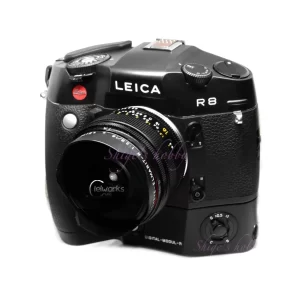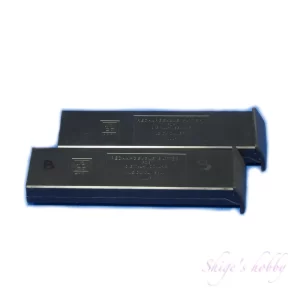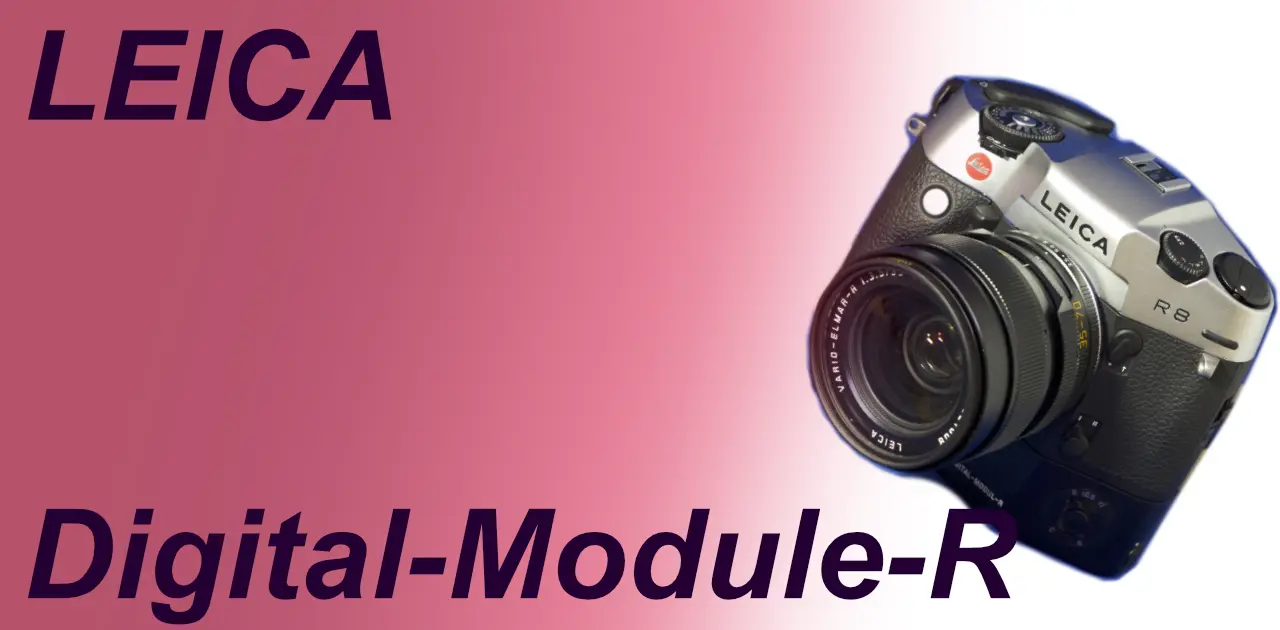Last updated on 2025-10-13
A review and photo examples using a LEICA R8 with a DMR (Digital Module R) attached and an R-mount lens.
- Please see the disclaimer regarding advertising here.
- Italicized links in the text are advertisement links that take you to other sites.
Table of contents
Gallery
The following system was used for the photo examples:
- SUMMILUX R 80mm +Digital Module R(DMR) +LEICA R8
- SUMMILUX 50 E60 +Digital Module R(DMR) +LEICA R8
- SUMMICRON R 90mm +Digital Module R(DMR) +LEICA R8
- Vario-Elmar-R 21-35mm +Digital Module R(DMR) +LEICA R8
- ELMARIT-R 19mm-II +Digital Module R(DMR) +LEICA R8
Review

1.概要
The DMR(Digital Module R) is an add-on module released by Leica in 2002 to convert the film cameras LEICA R8 & LEICA R9 into digital cameras.
To install it, remove the camera’s film cover and insert the module equipped with the KODAK KAF-10010CE. The digital-related machinery is packed into a space that extends below the lens, like an SLR camera battery grip.
It is a similar system to the I’m back series, which is still on sale. Even the I’m back models with large sensors only have a 4/3-inch sensor, but the DMR(Digital Module R has an APS-H (focal length magnification 1.37x) size sensor.
As the sensor size of the DMR(Digital Module R is smaller than 35mm film, a dedicated focusing screen with a masked periphery is included with the DMR(Digital Module R), which can be used in place of the screen attached to the LEICA R8 & LEICA R9.
Optional focusing screens are available in patterns such as grids and crosses, which are different from the regular LEICA R8 & LEICA R9. It seems that a DMR screen with a masked edge, similar to the LEICA R9, was also sold, but when I purchased a DMR around 2016, no such optional screens were available on the market.
The only recording media that can be used with the DMR (Digital Module R) is SD cards, with a maximum capacity of 4GB. SDHC and SDXC cards are not supported. Also, 4GB SD cards are rarely sold, so 2GB is the upper limit of the available options.
Using a 2GB SD card will allow you to take approximately 100 shots, which is equivalent to about three rolls of 36-exposure film and is just the right number for me.
One thing to note when using the camera: when using a LEICA R8 as the host computer, both the camera’s power switch and the DMR (Digital Module R) must be turned on.
When using a LEICA R9 as the host computer, turning on the camera’s power also starts up the DMR (Digital Module R).
This is true for both cameras: when shooting with a LEICA R lens with a ROM terminal, the lens information used is recorded in the Exif file.
2.Usability
The LEICA R8 equipped with a DMR (Digital Module R) is very large, comparable to the CANON EOS 1D series and NIKON single-digit D series, and it is extremely difficult to store in a camera bag with a lens attached. However, aside from its large size, it can be used as a normal SLR camera.
The DMR (Digital Module R) itself only has digital recording functions, and the camera relies on the functions of the LEICA R8 & LEICA R9 as its parent camera. Since I purchased the DMR first, I looked for the LEICA R8 & LEICA R9 as its parent camera, but the LEICA R9 was almost impossible to find on the used market, so I purchased a LEICA R8 with a relatively high serial number. After the DMR broke, I continued using it as a film camera, going back in time to its history.
This is a problem with the LEICA R8 & LEICA R9, but the shutter sound when taking pictures is quite loud. The DMR (Digital Module R) I purchased a used, fully functional R for a reasonable price, but it had already worn down over time, and the internal battery was already completely depleted, making the clock unable to record. When I consulted Leica Ginza about this, they simply told me, “The internal battery is gone.” They also said that even if it broke, it couldn’t be repaired.
The ISO dial was also malfunctioning; it was barely usable at ISO 100, but it was essentially a paperweight. It’s frustrating that digital devices have short lifespans and are difficult to repair.
The battery is a specialized design with no compatible replacements. Around 2018, I could take my old battery at Leica Ginza and they would replace it with a freshly refurbished one for a fee. Two of my batteries were also replaced for a fee. Since the DMR I purchased only came with one battery, I purchased a used one on eBay as a spare.
One refurbished battery would last me about 100 shots, the recording limit of a 2GB SD card, so it’s quite impressive, if by chance.

3.Summary
In conclusion, to sum up the DMR (Digital Module R) is a revolutionary item that transforms the film cameras LEICA R8 & LEICA R9 into digital cameras. Because it is a dedicated product, it doesn’t have the added feel of the “I’m back” series.
Because it was made by Leica at a time when they were weak in electronic devices, the essential circuit boards and electrical systems are prone to breaking down, and the biggest drawback is that they cannot be repaired as Leica no longer has any parts in stock.
Specification of DMR
| Items | Value | Note |
| Image sensor | KODAK / KAF-10010CE | Focal length is x1.37 |
| Recorded Media | SD card | Supports up to 4GB |
| Battery | 14447 [Lithium-ion battery DMR] | |
| Size(mm) | W x H x D 165 x 42 × 70〜83 | Excluding protruding parts |
| Weight(g) | 605 | Only body |
| Release date | 2002 | Product end 2006 |
Specification of R8/R9
| Items | Value | Note |
| Finder | Pentaprism, eye-level type, approximately 93% vertical/horizontal, 0.75x magnification (50mm lens, infinity, -1m-1) | |
| Shutter | Vertical travel laminar metal forcal plane shutter | |
| Shutter Speed | 1/8000〜1sec | Bulb mode is available |
| Photometry | Center weighted TTL average metering upon light depression of shutter release | |
| Battery | CR2 x2 | |
| Size(mm) | W x H x D 158 × 101 × 62 | Excluding protruding parts |
| Weight(g) | R8:890 / R9:790 | Only body |
| Release date | R8:1996-2002 / R9:2002-2003 |
Options
- 14447 [Lithium ion battery DMR]
- 14392 [Standard Screen DMR]
- 14387 [Cross clear glass screen DMR]
- 14343 [Finder screen universal screen R8/R9]
- 14344 [Ground glass screen R8/R9]
- 14345 [Micro Prism Screen R8/R9]
- 14346 [Ground ground glass screen R8/R9]
- 14347 [Cross clear glass screen R8/R9]
Reference links
Affiliate links

Amazon Prime Sale
Update history
- 2025.7.23
- 2025.1.4
- 2024.2.9:Update the article
- 2023.7.31:First draft



Be First to Comment